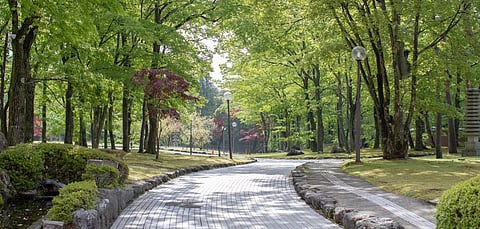Citizens can play a significant role in managing cities
Managing cities has become an increasingly tough job with the rapid pace in urbanisation. Urban local bodies have a lot to manage both in terms of city services, assets and citizen behaviour. In this difficult task what if citizens can share the burden and become partners in managing cities, its assets and services.
The Garden City of India, Chandigarh, has set an example for implementing such a participatory model of city management by involving RWAs (residents welfare associations).
Chandigarh has around 1,800 parks in the city. Depending on the area, these are majorly divided as city parks, community parks and neighbourhood parks.
Of the 1,800, around 95 per cent are classified as neighbourhood parks. These are managed by the RWAs under the participatory model adopted by the Municipal Corporation Chandigarh.
The excellent condition of the neighbourhood parks indicates that the RWA model of management is yielding positive results. It also signifies that participatory monitoring and engagement could resolve the management control issues faced by many urban local bodies and result in better upkeep and citizen satisfaction.
Engaging citizens actively in managing the assets of the city makes them more conscious, as they develop a sense of ownership towards the city, thus leading to strong positive associations towards public goods and services.
While the RWA has the sole objective of management, it has no ownership.
To manage the neighbourhood parks, a contract is signed between the corporation and the RWA annually, according to the terms of the horticulture division of the municipal corporation.
Under this, the corporation specifies a rate per square metre every month to the RWA for the upkeep of lawns, trees, shrubs and flowers, play equipments, seatings and labour components, which includes farm yard manure, pesticides/insecticides.
The corporation plays a supervisory role in inspecting all the contracted gardens regarding maintenance status according to the prescribed norms. They also train the RWAs with the required skills and make them aware of the do’s and don’ts for the management of parks. Women are majorly interested in taking up this opportunity.
Appropriate penalties are also introduced for non-performing RWAs. This has aesthetically contributed to the image of the city. Unlittered and well-maintained public spaces with appropriate adherence to the rules and regulations also add to the brand image of the city as well as make the management process sustainable.
Most Indian cities do not have well-maintained neighbourhood parks. The urban local bodies find it as an extra effort to manage large number of parks, which leads to their deterioration.
It is a researched fact that well-maintained green spaces have immense benefits in terms of social, environmental, economical and health benefits to the citizens.
Involving citizens can thus help in bringing around the required change that we look forward for improving the conditions of our cities.
It’s time that we open up to a decentralised model of city management, where citizens share responsibility along with the authorities. But, urban local bodies must take efforts to develop, design and execute such models. It may vary from service to service and city to city, but such models would definitely evolve over time and make our cities much better than what they are today.
This kind of a model makes the citizen a part of the management process, thus making the process inclusive. The citizens also develop a sense of civic ownership towards city assets and tend to motivate other citizens. They spread a positive sense of behaviour and discipline and encourage people to take appropriate care while using city amenities and assets.
Looking at the rapid urbanisation, this kind of a behaviour change is quite important for Indian cities at the moment. Ignoring the civic behaviour either results in increased maintenance cost or the asset becomes dead and unutilised and subsequently gets entangled in encroachments.
Participatory management is difficult to implement at the beginning, but eventually the process becomes smooth and the urban local bodies can just maintain a supervisory role.
This also opens up avenues for the government to launch other change initiatives as people are willing to cooperate and participate in sustainable development and see changes happening for welfare.
Mercy S Samuel is associate professor – urban management at CEPT University. She is working in the area of managing cities by designing service strategies from operational and financial perspective.
Himadri R Panchal is urban planner and manager at CEPT University. She is working on understanding cities from technological, operational and financial functioning of cities with aim of improving livability.
Views expressed are the authors' own and doesn't necessarily reflect that of Down To Earth



